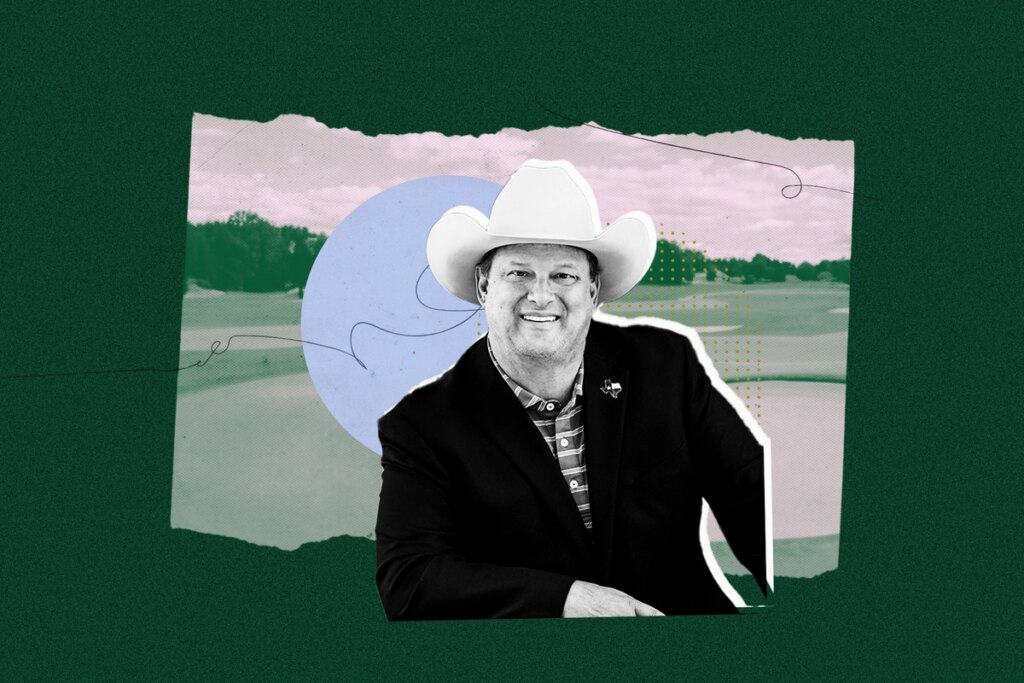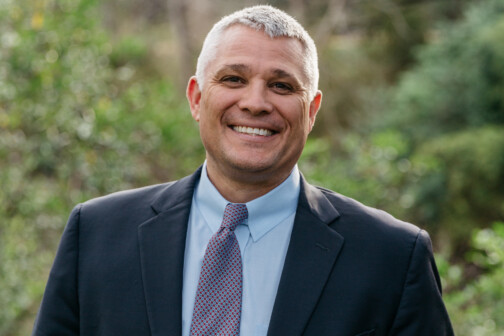Don’t challenge Mitchell Glieber to a fairway-hitting competition. On a perfect spring day at Royal Oaks Country Club, the State Fair of Texas president brought his A-game from the tee box. And it’s not like the 57-year-old was bumping it 180 yards down the fairway—the former SMU wide receiver was ripping it 250.
As the top executive for the State Fair of Texas, Glieber’s job is to ensure that the 24-day event is true to its roots yet innovative, fun yet secure, and—of course—a booming economic engine for the region.
In 2023, the State Fair of Texas, a nonprofit event and organization, not only welcomed over 2.3 million visitors but also generated $80 million in revenue. With operating expenses just over $70.5 million, the fair was able to increase its net assets from $88.8 million to $102.5 million. The fair’s impact extended beyond financial success, contributing nearly $15.8 million to local philanthropic causes and over $17.4 million to more than 3,000 students through its Big Tex Scholarship Program. Glieber anticipates these numbers will continue to rise.
“The thing that excites me more than anything right now is that the DFW area is growing by leaps and bounds,” he said after we bogeyed the first two holes. “There’s so much opportunity out there, and we have all these transplants that are moving in from other states and they may have a state fair in their home state, but it’s nothing like ours. We’re a different animal than the other fairs.”
As the North Dallas native came of age, his childhood was marked by traumatic moments. When the state fair leader was just seven years old, his mother mysteriously passed away while on a trip to Jamaica. He doesn’t remember much about her—just quick glimpses here and there. “It was pretty traumatic at that age, but all these years later, I just can’t bring myself to dig into the autopsy report,” he said on the third tee box after mashing his drive through the fairway into the fairway bunker on the 420-yard, dog-leg left.
His father, Frank Glieber, was a sports broadcaster, so the elder Glieber spent much of his time on the road. Frank—who called NFL, NBA, and NCAA basketball games, as well as the Masters golf tournament—inspired Glieber to pursue a career in sports. The younger Glieber accomplished that by launching his career post-college in the Dallas Mavericks’ sales department. Just before he graduated high school, Frank passed away.
Months later, in 1985, Glieber enrolled at SMU and started his college football career. Two seasons later, though, the NCAA dropped the death penalty on the football team due to the athletic program paying some of its players thousand-dollar signing bonuses, rent-free apartments, and $750-per-month allowances in some cases. The program shuttered for two years. Most football players transferred elsewhere, but Glieber stayed at SMU. “It was quite traumatizing,” Glieber said after knocking in a bogey putt on the 173-yard par three, fourth hole. “I was in a fraternity, and the school actually honored my scholarship, so I stayed to be part of building the program back up.”
In 1989, as the co-captain of the SMU football team, Glieber hauled in 49 receptions for 549 yards and one touchdown. That year, he earned Academic All-American honors and Academic All-SWC honors.
Through seven holes, the bogey train did not let go of Glieber and me—primarily due to poor short game. But on the par three eighth hole, the executive tossed a 25-yard pitch shot to two feet, resulting in a tap-in par.
After graduating with a business degree, Glieber spent the 90s with the Dallas Mavericks in the sales department—a dark time for the franchise. “After going a decade without making the playoffs, I realized it was time for me to go do something else,” he said after draining a par putt on 11—the third most challenging hole on the course. “There were back-to-back seasons where we won 11 and 13 games. And I was trying to sell to people, and they’re looking at me like I’m crazy.”
In 1999, a marketing and sponsorships position at the State Fair of Texas opened up, and Glieber snagged the job. Immediately, the sales veteran altered the fair’s sales game plan and provided immediate results. “Up until this point, the strategy was basically just fielding incoming calls,” he said. “We didn’t have a formal sponsorship system set up, so I put together a solid list of benefits and outlined our experiential elements. Advertisers at that time were really looking for ways to interact with customers in the entertainment area, so we got aggressive with our sales techniques.”
The new strategy tripled sponsorship revenue to $3.6 million. Today, it sits around $4.5 million. In 2013, Errol McKay retired, and Glieber was promoted. His first fair as president came in 2014.
Today, many changes are taking place at Fair Park. At least $300 million is being poured into the renovation of the grounds, including $140 million allocated to refresh the Cotton Bowl Stadium. But according to project architect Bryan Trubey, $300 million is just the tip of the iceberg. Glieber has a loose role in the project but is most excited to see how the upgrades impact the neighborhoods surrounding Fair Park.
Changes are also taking place at Fair Park First, a nonprofit unrelated to the State Fair of Texas but a partner in many facets. FPF is currently amidst a forensic audit of its finances. As a result CEO Brian Luallen was suspended but has since been reinstated. Most recently, president Darren James is stepping down, according to the Dallas Morning News.
Amidst much change in the neighborhood, one thing Glieber is sure of is that a newly renovated Fair Park will only increase the economic impact. Currently, the state fair is conducting a new economic impact study to gauge the 2023 event. Its last findings in 2017 concluded that the fair infuses more than $410 million a year to the region—not including the auto show. “There’s no way we can extract the number of leads the dealers get from the show, but we know it is a huge number,” he said.
According to a report by Cision, the 2023 auto show produced $99.2 million in ad equivalency and 105.4 million social media impressions during the fair’s promotional window of August 1 to October 31.
We come up on the long par three 12th. “This is one of my nemesis holes,” Glieber said with a laugh prior to sticking his tee ball on the fringe. I ask him how an organization and event rooted in tradition stays on the cutting edge of innovation.
“It’s a combination of innovation, bringing new elements to the fair, and retaining the most popular attractions at the fair, which are traditions,” he said. “If you get rid of something after it’s been there for a long period of time, and you think it’s run its course, you’re inevitably going to hear from people. We had a kid’s attraction called Little Hands on the Farm. And after it ran its course, we decided to change it and put something new in. Of course, the people who loved it asked where it had gone. So, it’s always a constant balance between honoring the traditions that people love and innovating and bringing in new items to keep the product fresh. It’s really a delicate balance we have to keep.”
Glieber, who logged par on 15 and 16, is constantly rooting for good October weather, which contributes to higher revenue. However, the one stressor that keeps Glieber up at night all year round is security.
“Revenues can be unpredictable and dependent upon different factors—like weather or other circumstances—but obviously, we have a lot of expenses, the biggest of which is security,” he said after finding the tight fairway on 17. “We try not to overextend ourselves, putting us in a vulnerable position. But there are certain things that you can’t cut corners on. The last three years’ security expenses have gone through the roof. Last year we paid $6.5 million. And we’re paying the Dallas Police Department full rates.”
The 2023 fair was evacuated on October 14 after a gunman opened fire and wounded three. One of the victims is now suing the gunman and Andy Frain Services and GXC, Inc., two companies involved in the fair’s security. The lawsuit claims negligence during the assault.
“The safety of our fairgoers, partners, and staff remains our top priority, and we are devastated that someone was injured in this terrible incident during last year’s event,” Glieber said in a statement to D CEO on June 24. “The State Fair of Texas engages leading security experts in the industry to ensure the safety of our patrons, and we are constantly evaluating our security plan with DPD and the Fair’s other security partners. The State Fair adopts the most up-to-date recommended security practices for special events of our size, and constantly evaluates additional measures to increase our effectiveness. Following the incident on October 14, 2023, the State Fair team has worked diligently to identify additional protections to implement. We will share more details related to this year’s enhanced safety and security measures ahead of Opening Day of the 2024 State Fair of Texas.”
Looking ahead, the fair’s full list of 2024 food offerings is still in the works. Each year, it puts on the Big Tex Choice Awards to determine what unique food items will be offered at concessions. “The winners of this contest get a ton of business,” he said. “It could mean hundreds of thousands of dollars in sales if their food item wins.”
Moreover, the fair will have some new attractions this fall. “We’ll have some new rides, we will have a few new shows this year, and we’re expanding our musical main stage offerings,” Glieber said while tapping in for bogey on 18. “It’s so crowded on the weekends, so we’ll be adding some new weekday shows.”
Moving forward, Glieber, of course, sees opportunity in DFW’s backyard, but 75 percent of fair attendees come from within a 70-mile radius. “So we have a huge chance to grow outside of that radius,” he said as we shook hands, and he signed his scorecard for an 89. “Our goal is to take advantage of that and give new families a chance to make new memories.”
Author








